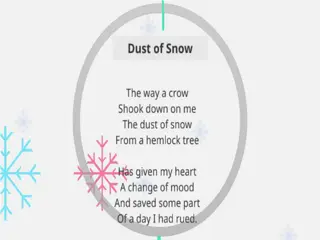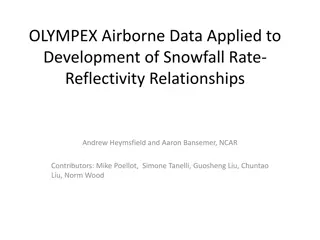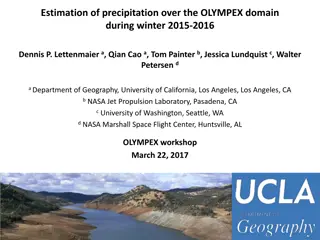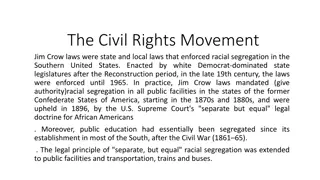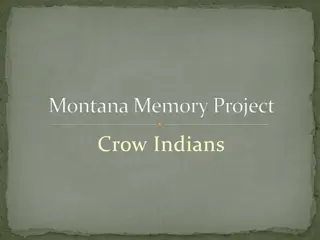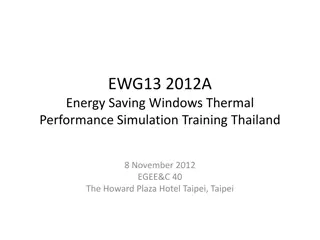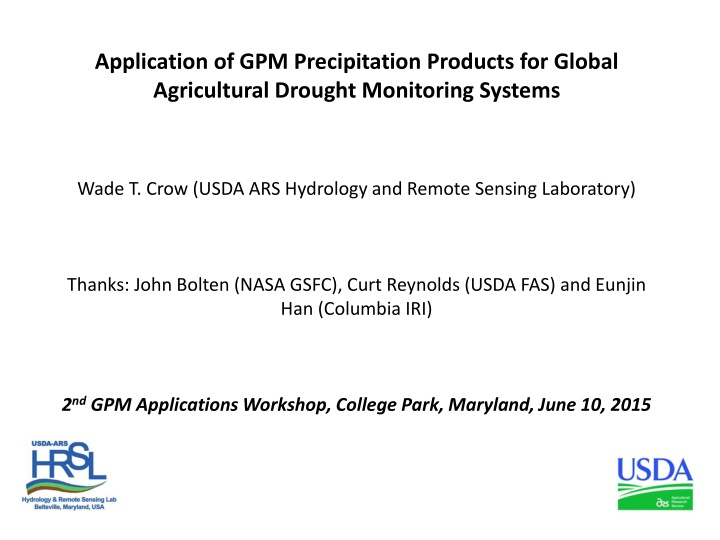
Global Agricultural Drought Monitoring with GPM Precipitation Products
Explore the application of GPM precipitation products for global agricultural drought monitoring systems. Learn about the Global Root-Zone Soil Moisture DA System, 2002-2010 global rank correlations, and the Global Precipitation Enhancement System. Discover the Soil Moisture/Rainfall Friendly Competition and the initiation of the SMAP Science Mission. Uncover important points on agricultural drought monitoring techniques and the leverage of microwave frequencies for land surface calculations.
Download Presentation

Please find below an Image/Link to download the presentation.
The content on the website is provided AS IS for your information and personal use only. It may not be sold, licensed, or shared on other websites without obtaining consent from the author. If you encounter any issues during the download, it is possible that the publisher has removed the file from their server.
You are allowed to download the files provided on this website for personal or commercial use, subject to the condition that they are used lawfully. All files are the property of their respective owners.
The content on the website is provided AS IS for your information and personal use only. It may not be sold, licensed, or shared on other websites without obtaining consent from the author.
E N D
Presentation Transcript
Application of GPM Precipitation Products for Global Agricultural Drought Monitoring Systems Wade T. Crow (USDA ARS Hydrology and Remote Sensing Laboratory) Thanks: John Bolten (NASA GSFC), Curt Reynolds (USDA FAS) and Eunjin Han (Columbia IRI) 2nd GPM Applications Workshop, College Park, Maryland, June 10, 2015
Global Root-Zone Soil Moisture DA System Global Rainfall Products Root-Zone Soil Moisture Anomalies Soil Water Balance Model Data Assimilation Global Surface Soil Moisture Products Goal: Designing a data assimilation system where the soil moisture and rainfall products mutually compensate for their respective random errors (operational since Spring 2014 within the USDA FAS Crop Explorer System).
2002 2010 Global Rank Correlations for Model and Data Assimilation Rank correlation between moisture for month i versus NDVI for month i+1 The marginal value of soil moisture is (roughly) proportional to the ratio: (skill of soil moisture/skill of rainfall)
Global Precipitation Enhancement System RT Global Rainfall Products Soil Water Balance Model Enhanced RT Rainfall Validate Data Assimilation Rain Gauges Global Surface Soil Moisture Products Goal: Use soil moisture time series as an additional source of information for multi- sensor, real-time precipitation accumulation products. SMART Soil Moisture Analysis Rainfall Tool (Crow et al. 2009; 2011) SM2RAIN Soil Moisture To RAINfall Tool (Brocca et al. 2012)
Soil Moisture/Rainfall Friendly Competition Scorecard AMSR-E + TMPA RT (V4-V6) SMOS/ASCAT + TMPA RT (V7) Marginal SM Value (anomaly correlation) SMAP/IMERG ?? SMOS + TMPA RT (V7) 2016 2002 2004 2006 2008 2012 2014 2010 Year
Other Important Points: 1) Lower-level leveraging of land surface microwave frequencies (i.e., C- and X-band) is also useful for land surface emissivity calculations. 2) Agricultural drought monitoring is based fundamentally on comparison of inter-annual anomalies (TRMM to GPM continuity is key for the calculation of climatological expectations). 3) Latency requirements are much more forgiving that NWP (IMERG late is well-positioned).







